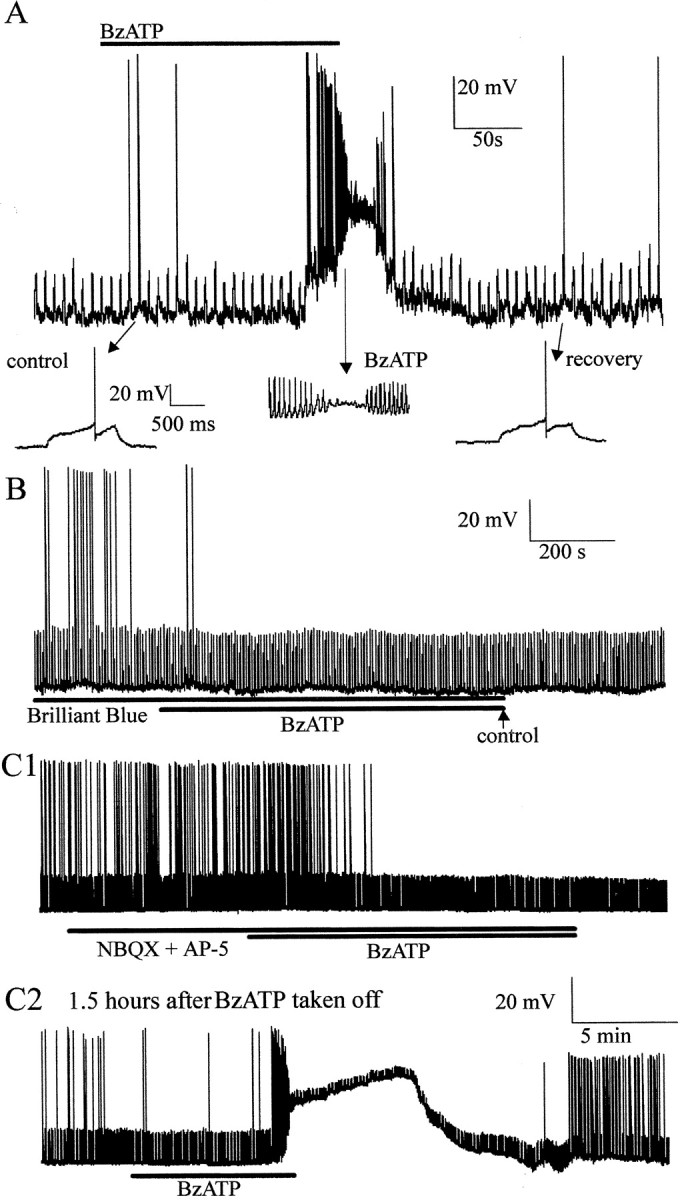Fig. 6.

Activation of the P2X7 receptor in CNS slices elicits depolarizations in neurons attributable to release of glutamate. A, The P2X7 receptor agonist BzATP depolarizes neurons. In this example the cell was at a potential of −60 mV, and a depolarizing current of +20 pA, 1 sec duration was applied every 7 sec, which on occasion caused the neuron to reach the threshold for firing (shown on a faster time base below). Application of BzATP (30 μm) depolarized the neuron, resulting in discharge of action potentials and eventual depolarizing block. Recovery after washout is shown in the inset.B, The effects of BzATP were antagonized by appropriate antagonists. When preincubated in the P2X7 receptor antagonist Brilliant Blue G (2 μm) for 30 min, BzATP failed to depolarize neurons. This neuron was also held at −60 mV, and depolarizing current pulses of +30 pA were applied. C,BzATP-evoked depolarizations were blocked by excitatory amino acid receptor antagonists. Superfusion of the non-NMDA receptor antagonist NBQX (20 μm) and the NMDA receptor antagonist AP-5 (50 μm) prevented BzATP (30 μm)-evoked depolarization even after prolonged application (C1). After 90 min washout, application of BzATP caused a large depolarization and increase in firing rate that again resulted in depolarizing block. This neuron was held at −60 mV with current pulses of +15 pA applied every 7 sec.
